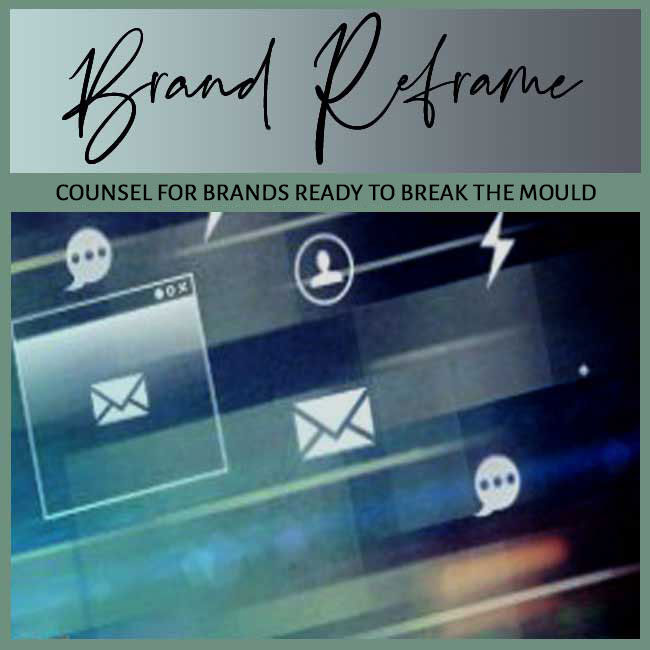
BY: SHOBHA PONNAPPA | BRAND BREAKTHROUGH STRATEGIST | 45 YEARS | 125+ CLIENTS
A brand launch is the deliberate, orchestrated introduction of a new brand, product, service, or sub-brand to the market. It is more than unveiling a logo or running an ad campaign … it is the point where strategic positioning meets public perception. A launch is the moment when you take the brand from an internal vision to an external reality, shaping how the world first experiences it. The way you launch sets the tone for everything that follows: audience expectations, competitive positioning, and your brand’s long-term trajectory.
In my 45 years working on launches for global corporations, fast-scaling startups, and ambitious individual brands, I’ve seen that successful launches are never accidental. They’re the product of months (or years) of groundwork … market intelligence, message clarity, timing, and alignment between promise and delivery. A strong launch is not just an event; it’s the opening chapter of an ongoing story that the market wants to keep reading.
In an attention-fragmented world we have now, first impressions aren’t just important … they’re decisive. Launches used to benefit from novelty alone; if you were first or different enough, people noticed. Now, audiences have seen thousands of “new” things before breakfast. A brand launch must work harder to establish not only what’s different, but why it matters, why it’s timely, and why your audience should care.
A weak launch forces a brand into repair mode from day one, fighting scepticism, confusion, or indifference. In contrast, a strong launch can generate momentum that carries the brand through early challenges, builds trust faster, and makes marketing spend more efficient. In competitive markets, that head start can make the difference between becoming a player and fading into the noise.
Before anyone sees your brand, you must know exactly where you want it to live in the market’s mind. Strategic positioning answers the questions: Who are we for? What problem are we solving? How are we different? Why now? Without this clarity, your launch risks being about surface rather than substance.
The strongest positioning is anchored in a deep understanding of the market and audience. It considers competitive landscapes, cultural undercurrents, and unspoken customer needs. Positioning is the compass for your creative, media, and experiential choices … ensuring that every move tells the same story.
A launch needs more than a tagline … it needs a story. Audiences engage with a coherent narrative that explains where your brand came from, what it stands for, and where it’s going. This narrative must be authentic, memorable, and adaptable across multiple formats, from press releases to social media snippets.
The key here is emotional resonance. Facts and features establish credibility, but stories inspire belief. A launch narrative that weaves together purpose, proof, and promise becomes a tool for rallying customers, partners, and even your internal teams around the same vision.
One press conference, one ad, or one post won’t cut it. Effective launches blend multiple channels … digital, experiential, PR, influencer, direct engagement … into an integrated rollout. This isn’t about being everywhere for the sake of it; it’s about creating a coordinated sequence of touchpoints that reinforce and deepen the brand story.
Consistency matters here. Each channel should feel like a different chapter of the same book, not a random collection of disconnected messages. The most impactful launches often start with controlled teasers, then crescendo into a high-visibility reveal, followed by sustained engagement to keep the momentum alive.
The launch experience itself … whether physical, digital, or hybrid … should embody the brand’s promise. If your brand claims innovation, the launch should surprise and delight. If it claims trust, the launch should feel reassuring and transparent. Experience is where expectations are set and either confirmed or betrayed.
Delivery extends beyond the launch day. It’s the seamless onboarding of new customers, the readiness of your team to answer questions, and the ability of your systems to meet demand. A launch that overpromises and underdelivers is worse than no launch at all.
The groundwork for a strong launch begins far earlier than most founders or marketers realise. Pre-launch activities … from audience listening sessions to internal alignment workshops … ensure that the brand is not only market-ready but also audience-ready. This means ironing out operational kinks, training staff, and preparing content pipelines before the public sees anything.
Soft launches or beta phases can be powerful tools for refining the offer based on real-world feedback. By involving select audiences early, you create anticipation while reducing the risk of misalignment on launch day. This approach also allows for the creation of authentic testimonials and case examples to use in the official rollout.
A launch should never be treated as a finish line … it’s the starting point. The real challenge is maintaining visibility, engagement, and credibility once the initial buzz fades. This requires a planned post-launch strategy that extends well beyond “thank you” emails and a few follow-up posts.
Post-launch, you should be introducing new content series, customer success stories, and feature updates that keep audiences engaged. Partner collaborations, seasonal campaigns, and surprise offers can all be used to extend the narrative and prevent stagnation. Think of it as keeping the conversation alive, not letting it trail off into silence.
One of the most damaging mistakes brands make during a launch is assuming that initial visibility is the same as long-term viability. A splashy campaign, high-profile endorsements, or aggressive media buys can create a momentary buzz, but if the brand story, positioning, and audience connection aren’t solid, the excitement quickly fades.
Some brands overestimate the pull of their existing reputation, expecting customers to follow them into a new category or market without clear proof of fit. Others focus so heavily on the launch day spectacle that they fail to plan for the weeks and months afterward, leaving the audience with nothing new to engage with once the initial wave passes. This creates a dangerous gap where early curiosity turns into indifference.
A startup launching a fitness wearable faced entrenched competitors. I positioned the brand as “the data coach in your pocket” and focused on personalisation features rivals ignored. I launched with targeted influencer partnerships and a live-streamed demo event. Within six months, the brand had a 5% share in its segment … a feat in a saturated category.
A luxury hotel group entering a market already rich in options needed a unique entry point. I crafted a “local luxury” narrative, integrating the city’s culture into design, cuisine, and experiences. The launch event invited local artists and chefs, making it feel like the city’s own. Occupancy rates exceeded forecasts by 20% in the first quarter.
A small skincare label with a cult local following wanted an international debut. Instead of a generic “now shipping worldwide” message, I created an online “global skin wellness summit” with experts and live tutorials. This interactive approach generated massive media pickup and doubled online sales in three months.
A SaaS company known for serving startups wanted to attract enterprise-level customers. I advised a dual launch strategy: targeted C-suite briefings before a public reveal. This allowed for in-depth discussions on ROI before the noise of general marketing. Within a year, enterprise accounts formed 40% of their revenue.
An established fashion house launched a youth-focused sub-label to counter declining relevance. I used pop-up events, limited drops, and collaborations with street artists to generate hype. The sub-label’s first collection sold out in days, rejuvenating the main brand’s image.
A health-focused NGO wanted to launch a new public awareness campaign. I shifted the language from “campaign” to “movement,” inviting individuals to pledge and share their stories. The momentum extended for over a year, with sustained media attention and volunteer growth.
A standout launch comes from clarity and focus, not from trying to be louder than everyone else. Start by defining one big, compelling message that sums up why your brand matters right now. Build your launch around that message, ensuring every channel, visual, and interaction reinforces it. The sharper your point of difference, the more likely people will remember and talk about your brand.
Both matter, but post-launch follow-through sustains the energy you build before launch. Pre-launch activities create anticipation and curiosity, but if there’s nothing to maintain that interest, your momentum fades quickly. Plan a steady sequence of content, offers, and engagement after the launch to deepen the connection and keep people coming back. The best launches are treated as the start of an ongoing story, not a single event.
Timing can make or break a launch because it shapes how receptive your audience will be. You want to align your debut with moments when your audience is open to change or actively seeking solutions in your category. This might mean syncing with seasonal demand, industry events, or cultural trends. A well-timed launch feels relevant and urgent, increasing the likelihood of engagement.
Storytelling turns your launch from a transaction into an emotional experience. People connect more deeply with a brand that has a clear origin story, mission, or vision they can relate to. Use narrative to show why your brand exists, what it stands for, and how it will make a difference in their lives. When people feel part of your journey, they’re more likely to support and share it.
Not necessarily. A big budget can amplify your reach, but creativity, precision targeting, and strong positioning can have just as much impact. Smaller brands can focus on niche audiences, personal engagement, and strategic partnerships to create buzz. An authentic, well-executed launch often outperforms a flashy but unfocused campaign.
Success is measured by more than just immediate sales. Look at how well you’ve generated awareness, built engagement, and positioned your brand for long-term growth. Track metrics like website visits, social shares, media coverage, and email sign-ups alongside revenue. A strong launch plants seeds that may bear fruit months or even years later, so measure both short-term wins and long-term potential.
Explore Brand Launch Failure … Real Cases & Fixes
Case Studies
FAQ Insights

"One BIG IDEA can turn brand stagnation into unstoppable movement. Spots are limited each week ... book your breakthrough session now."
Shobha Ponnappa
My Definitive Guides to Other Critical Branding Concepts
Smart insights, real-world frameworks, and idea-driven clarity – designed to help brands move.
Get my fortnightly Brand Reframe newsletter. Smart insights, distilled thinking, and focused momentum to help your brand lead.

Get my free AI strategy guide. Smart prompts, sharper briefs, and practical ways to make AI support your brand momentum.

Just fill in the form to join. Get my newsletter and the guide shown alongside, all with several game-changing tips.